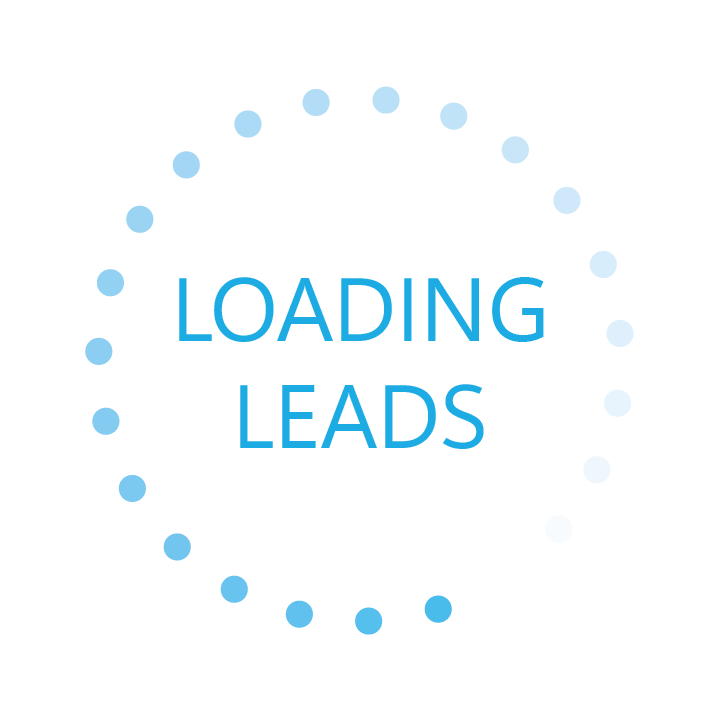Businesses face the difficult question of choosing between traditional and digital marketing strategies. Many small businesses only have the budget for one or the other. Most choose to continue doing what they have always done, which is a few magazine ads, and maybe a billboard on the local freeway. In this comprehensive guide, we will review the key distinctions between traditional and digital marketing. We will highlight the advantages of moving digital and discuss the synergy that can be achieved by finding the balance between both approaches.
Traditional Marketing: The Time-Tested Pathway
Traditional marketing, has been the go-to strategy for generations. Print advertisements, television commercials, radio slots, billboards, and direct mail have long been the trusted methods of marketing for reaching a wide audience. These methods are tangible, easily recognizable, and have a nostalgic appeal. However, in the rapidly evolving world of technology, the limitations of traditional marketing have become increasingly apparent.

Types of Traditional Marketing
While the use of technology has transformed the world of marketing, traditional marketing remains relevant, providing businesses a practical way to connect with their audience. Understanding the different types of traditional marketing is crucial for businesses seeking a balanced and comprehensive approach to their marketing strategy.
Print Advertising:
One of the oldest forms of marketing, print advertising includes newspapers, magazines, brochures, and direct mail. While digital media has encroached on this territory, print is still important, especially for local businesses aiming to reach a specific demographic.
Broadcast Advertising:
Television and radio commercials have been a staple of marketing for decades. The visual and audible impact of broadcast advertising can create lasting impressions. Although widespread use of streaming services has impacted the industry, television and radio advertising remains relevant for broad audience outreach.
Outdoor Advertising:
Billboards, posters, and signage contribute to name recognition. Placed strategically in high-traffic areas, outdoor advertising captures the attention of passersby and reinforces brand visibility.
Direct Mail Marketing:
Email has significatly changed the amount of paper mail consumers recieve, but direct mail marketing still stands. Sending physical materials, such as postcards, catalogs, or flyers, directly to consumers’ mailboxes allows businesses to target specific geographic areas or demographics.
Telemarketing:
While it has received mixed reviews over the years, telemarketing remains a form of direct outreach. Businesses engage with potential customers via phone calls to convey their message, generate leads, or conduct surveys.
Event Sponsorship and Participation:
Traditional marketing extends beyond media channels to include live events. Sponsorship of community events, trade shows, or industry conferences provides businesses with valuable face-to-face interaction opportunities, creating brand awareness and customer engagement.
Public Relations (PR):
PR is a cornerstone of traditional marketing, including activities like press releases, media interviews, and community engagement. Building and maintaining a positive public image through traditional PR channels can significantly impact brand reputation.
While these traditional marketing avenues have been the foundation of advertising for decades, it’s important for businesses to recognize the evolving marketing opportunities. The integration of digital marketing strategies with the traditional approaches above can amplify the impact and relevance of a comprehensive marketing campaign. Finding the right balance between traditional and digital opportunities will ensure an effective marketing strategy.

Traditional Marketing Challenges
Limited Targeting:
Traditional marketing aims to reach a general audience. While traditional marketing can generate brand awareness, it often lacks the precision required to target specific demographics. Digital marketing, on the other hand, offers robust tools for targeting defined audience segments, ensuring that your message reaches those most likely to engage with your product or service.
Cost Challenges:
Traditional marketing avenues can be expensive, particularly for small and medium-sized businesses. Producing and airing a television commercial or placing a full-page ad in a magazine can strain budgets. Digital marketing provides a cost-effective alternative, allowing businesses to allocate resources efficiently and achieve measurable results without the hefty price tag. It is difficult to attribute an ROI to most traditional advertising strategies.
Limited Interactivity:
Traditional marketing is a one-way street. Whether it’s a print ad or a television commercial, the audience is a passive recipient of the message. Digital marketing, with its interactive nature, invites engagement. Social media platforms, email campaigns, and interactive website content enable businesses to connect with their audience, encouraging participation and feedback.
Digital Marketing: Getting in Front of Customers When They Are Most Interested
A digital strategy that integrates various types of digital marketing often yields the most significant results. By understanding and leveraging the strengths of each type of marketing, businesses can create a powerful and comprehensive digital marketing strategy that resonates with their target audience and drive success.

Types of Digital Marketing
There are many types of digital marketing strategies and the opportunites are continually evolving. To grow their presence online, businesses must analyze different digital strategies to stay relevant and competitive. Here’s an overview of the different types of digital marketing strategies that enable businesses to better connect with their audience online.
Search Engine Optimization (SEO):
SEO is the foundation of digital visibility. It includes optimizing a website’s content to rank higher in search engine results. By understanding and leveraging search algorithms, businesses can enhance their online presence and attract organic traffic.
Content Marketing:
Content is king in digital marketing. Content marketing involves creating and distributing valuable, relevant, and consistent content to attract and engage a target audience. Blog posts, articles, videos, and infographics are among the versatile content formats used to convey messages and establish authority.
Social Media Marketing:
Social media platforms are great for connecting businesses with their audiences. Social media marketing involves creating and sharing content on platforms like Facebook, Instagram, Twitter, TikTok, and LinkedIn to build brand awareness, engage with customers, and drive website traffic.
Email Marketing:
A direct and personalized channel, email marketing remains a great tool for businesses. It involves sending targeted messages to a specific audience to nurture leads, promote products, or share valuable content.
Pay-Per-Click (PPC) Advertising:
PPC advertising allows businesses to bid for ad placement in search engine results or on websites. Advertisers pay a fee each time their ad is clicked. This model provides a swift and measurable way to drive traffic to a website and generate leads.
Affiliate Marketing:
Collaborative partnerships drive affiliate marketing. Businesses reward affiliates for driving traffic or sales to their website through the affiliate’s marketing efforts. This performance-based approach aligns interests and expands reach.
Influencer Marketing:
Leveraging the influence of individuals with a substantial online following, influencer marketing involves collaborating with influencers to promote products or services. Authentic endorsements from influencers can significantly impact brand perception.
Video Marketing:
Video marketing involves creating and sharing videos to convey messages, showcase products, or engage audiences. Platforms like YouTube and TikTok have become powerful avenues for video marketing.
Mobile Marketing:
Mobile marketing targets users on their cell phones through channels like apps, SMS, or responsive websites. Location-based marketing and mobile advertising optimize the user experience on their cell phones.
Analytics and Data-Driven Marketing:
Digital marketing thrives on data. Analytics tools enable businesses to measure and analyze the performance of campaigns, customer behavior, and website metrics. Data-driven insights inform strategic decisions for ongoing optimization.
Benefits of Implementing a Digital Marketing Strategy
Digital marketing has emerged as a game-changer in business over the past 20 years, revolutionizing how businesses connect with their audience. Still, many small businesses are slow to adopt online strategies, allowing for opportunities among competitors. Let’s explore the key advantages that make digital marketing the preferred choice for businesses looking to thrive in their current markets.
Precision Targeting:
Digital marketing excels in precision targeting. Through data analytics and user behavior tracking, businesses can tailor their marketing efforts to specific demographics, interests, and behaviors. This ensures that every advertising dollar is spent effectively, reaching those most likely to convert into customers.
Measurable Results:
One of the standout features of digital marketing is its ability to provide measurable results. Analytics tools offer in-depth insights into the performance of campaigns, allowing businesses to track key metrics, such as website traffic, conversion rates, and customer engagement. This data-driven approach empowers businesses to refine their strategies for optimal results.
Cost-Effective Strategies:
Digital marketing provides cost-effective alternatives to traditional advertising. Social media platforms, search engine optimization (SEO), and email campaigns offer scalable solutions that can be tailored to fit budgets of all sizes. This democratization of marketing channels allows even small businesses to compete on a level playing field with larger counterparts.
Global Reach with Local Impact:
Digital marketing enables businesses to reach a global audience while maintaining a personalized, local touch. Localized SEO efforts, geo-targeted advertising, and social media engagement allow businesses to connect with their community while extending their reach to a broader market.
Interactivity and Engagement:
Digital marketing thrives on interactivity. Social media platforms, blogs, and interactive website content invite audiences to engage with brands. This two-way communication fosters a sense of community and builds lasting relationships, turning customers into brand advocates.
Can Traditional and Digital Marketing Work Together?
While digital marketing is dominating the modern marketing world, the integration of both traditional and digital strategies can create a harmonious synergy that maximizes how businesses spend their marketing budget. Here’s how businesses can leverage the strengths of both approaches:

Multichannel Campaigns:
By combining traditional and digital channels, businesses can create comprehensive, multichannel campaigns. For example, pairing a television ad with a targeted social media campaign can amplify the reach and impact of a marketing message. This approach ensures that the brand is present across various touchpoints, increasing the likelihood of engagement.
Bridge the Generational Gap:
Different demographics respond to different marketing channels. While younger audiences may be more engaged with digital platforms, older demographics may still be receptive to traditional advertising. Bridging the generational gap by strategically using both traditional and digital channels ensures that the brand resonates with a diverse audience.
Enhance Brand Consistency:
Integrating traditional and digital marketing efforts provides an opportunity to enhance brand consistency. From the messaging to the visual elements, maintaining a cohesive brand identity across all channels fosters recognition and trust among consumers.
Boosting Credibility and Trust:
Traditional marketing, with its tangible and time-tested nature, can contribute to the credibility of a brand. Combining this with the real-time engagement and transparency of digital platforms creates a holistic approach that builds trust with the audience.
Data-Driven Insights for Informed Decisions:
The data-driven nature of digital marketing provides valuable insights that can inform traditional marketing strategies. Analyzing digital analytics can reveal trends, preferences, and behaviors that can shape the content and messaging of traditional campaigns for greater impact.
Striking the Right Balance Between Traditional and Digital
In the tug-of-war between traditional and digital marketing, the key lies in striking the right balance. While digital marketing takes center stage in the modern era, traditional methods should not be dismissed outright. A thoughtful, integrated approach that leverages the strengths of both ensures a comprehensive and effective marketing strategy.
At Loading Leads, we advocate for embracing the possibilities of online marketing while respecting the value of traditional marketing. By understanding the unique strengths of each approach and strategically integrating them, businesses can navigate the marketing landscape with confidence, maximizing their reach, engagement, and ultimately, their revenue. Contact us to see how a digital marketing plan could fit into your existing marketing strategy.



